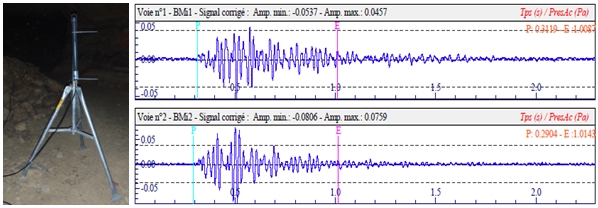Acoustic monitoring
Acoustic monitoring
Acoustic monitoring is a passive method which consists in detecting and recording acoustic noises (air or aquatic pressure waves) induced by blocks falls and fracturing from the roof or the pillars of an underground cavity. It is an is easy-to-install technique that requires an environment favorable to the diffusion of acoustic waves and is thus generally a solution in the context of large abandoned and silent underground cavities. If correctly installed, with one microphone, it is possible to monitor an area extending on a few tens to several hundred meters depending on the context.
Acoustic monitoring pertinently completes geotechnical monitoring in large and complex cavities. Its cost-benefit in abandoned underground structures presenting risks of unstable evolution towards the surface, such as sinkholes or localized collapses, turns out to be particularly interesting and its implementation is rather safe, since the sensors, microphones or hydrophones, are remotely located from the areas with strong disorders. In the case of sites which would be inaccessible from the bottom, it is also possible to instrument the cavity by means of boreholes into which the sensors are lowered. Listening to the recorded signals gives perceptible information which makes it possible The discrimination of parasitic triggers from triggers caused by geotechnical degradation is.
